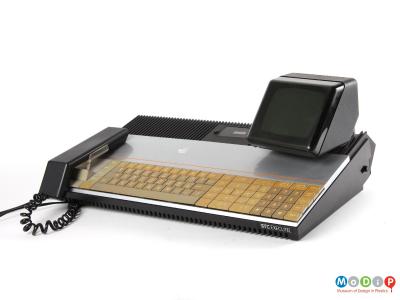Plastics have played a key role in communications since gutta percha, a natural plastic, was used to insulate the first submarine telegraph cable successfully laid between England and France in 1851. The earliest telephones were constructed of wood but by the 1920s plastics had become the default material for their manufacture. Two telephones made expressly for the workplace are displayed. The Deltaphone (1) was intended for factory use having push buttons for linking within an internal communications system. The British Rail telephone (2) of phenol formaldehyde mounted within a metal container, was designed to be wall-mounted, and intended for employee use only.
Plastics are not only insulating and strong but also light. This makes them an especially appropriate material for products for which portability is an intrinsic requirement. Examples are the Vantone Handy Phone walkie-talkie (3), a two way radio that operates wirelessly on a single frequency band, popular before the introduction of mobile phones; or the portable Connevans SO4 cassette recorder (4) designed to help students with hearing difficulties to record their lessons and replay them.
Communication away from the office is also an essential part of work. From the 1970s, car phones became popular but as the Panasonic EF 6157 (5) demonstrates these were often cumbersome pieces of equipment and have largely been superseded with the advent of the mobile phone.
Telephones have also been combined with other workplace requirements. The Executel executive unit (6) combines telephone, directory, diary, notepad, calculator, view data, and clock. The accompanying advertising campaign said ‘who’s a clever little integrated, multifunctional, network-linked, public-data, desk communication terminal, then!’ However, unlike the 1990s Nokia 9110 Communicator (7), which combines the same features with email facility and internet into a small hand-held device, it was not successful.







